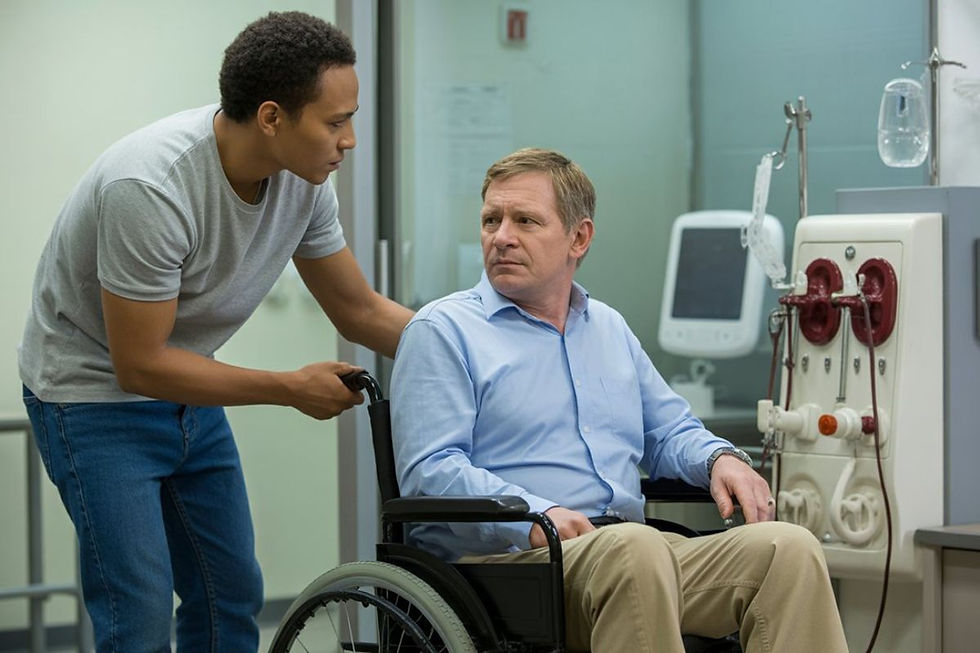Navigating Rural Healthcare Transport Challenges
- securecomfortcareu
- Sep 11, 2025
- 2 min read
Access to quality healthcare is a fundamental need, but for many living in rural areas, transportation remains a significant barrier. In urban environments, a network of public transit, ride-share services, and specialized medical transport providers help patients reach hospitals, clinics, and therapy centers easily. However, rural communities often face unique challenges when it comes to healthcare transportation, which can negatively impact patient outcomes and quality of life.
The Rural Healthcare Transport Problem

Residents in rural areas frequently live far from medical facilities, with the nearest hospital sometimes over 50 miles away. Limited or no public transportation options mean patients often depend on private vehicles, family members, or specialized services that may be sparse or unavailable. This situation becomes particularly critical for seniors, disabled individuals, and those with chronic health conditions who require regular medical attention.
Key Challenges in Rural Healthcare Transportation
1. Distance and Geography
Long distances between patients and healthcare providers are a major hurdle. Poor road infrastructure, adverse weather conditions, and lack of direct routes often prolong travel time, making regular healthcare visits inconvenient or impossible.
2. Limited Transportation Options
Public transportation is either non-existent or infrequent in many rural regions. Ride-sharing services like Uber and Lyft generally don’t operate in low-population areas, and few specialized medical transport services are available.
3. Cost of Transportation
Private medical transport services are often expensive, and many rural residents may not qualify for subsidized programs or have insurance coverage that includes transportation. This financial burden deters many from seeking timely medical care.
4. Lack of Coordination
Many rural patients have to navigate multiple providers and scheduling systems without coordination support, making the process overwhelming, especially for the elderly or individuals with limited digital literacy.
Innovative Solutions to Bridge the Gap
Despite these challenges, several strategies and innovations are helping improve healthcare access in rural communities.
1. Non-Emergency Medical Transportation (NEMT) Services

Specialized NEMT services focus on transporting seniors and disabled patients to and from medical appointments safely and reliably. These services often partner with healthcare providers, Medicaid, or local governments to provide cost-effective solutions.
2. Telemedicine Expansion
By allowing virtual consultations, telemedicine reduces the need for in-person visits. However, this solution requires reliable internet access, which is still a barrier in some rural areas. Efforts to expand broadband infrastructure help enable this service.
3. Community Ride-Sharing Programs
Some rural communities have developed volunteer driver programs or community-based ride-sharing solutions where local volunteers provide transportation for medical appointments at low or no cost.
4. Government and Non-Profit Initiatives
Several government programs and non-profit organizations provide financial assistance, subsidized transportation services, or grants to support healthcare transport in underserved rural regions.
The Way Forward
Addressing rural healthcare transport challenges requires a multi-pronged approach:
Investing in rural transportation infrastructure
Expanding NEMT services with better government support
Improving digital connectivity for telehealth solutions
Raising public awareness about existing resources
Healthcare transportation is more than just moving patients from point A to B; it’s about connecting people to life-saving medical services and improving health outcomes. When searching for wheelchair transportation near me, it’s essential to choose reliable services that prioritize safety and comfort. As we strive toward equitable healthcare for all, solving rural transport challenges must remain a top priority.








Comments